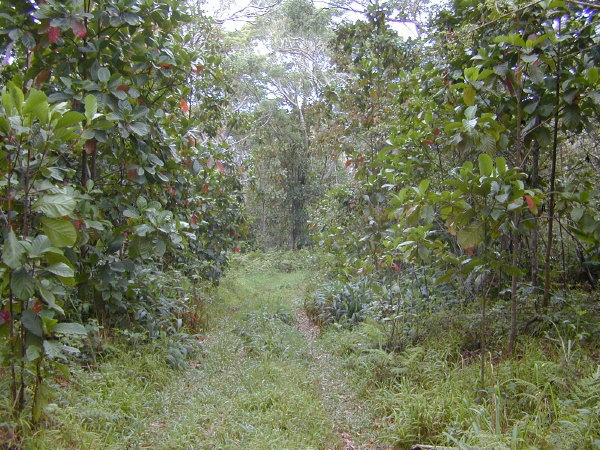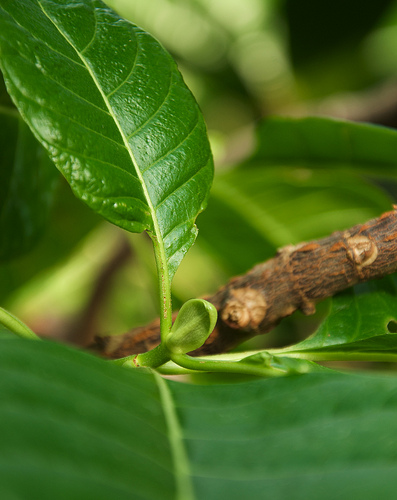Habitat
Cinchona pubescens is most native to the Andes Mountains in Ecuador. In this country, the tree can be found inhabiting altitudes from 300-3900 meters above sea level. It is in Ecuador that C. pubescens has the widest distribution of all of the species of Cinchona. This species can also be found natively growing in Bolivia, Columbia, Costa Rica, Panama, Peru and Venezuela. Humans have also introduced the species to Tahiti, Hawaii, the Galapagos Islands as well as St. Helena, Tanzania.
Cinchona pubescens resides in a
va st array of
different habitats. These habitats include: agricultural
areas, along coastlines, natural forests as well as planted
forests, grasslands, disturbed areas, and among shrubberies.
The species prospers well in disturbed areas and best in areas
that have recently been burnt. Cinchona pubescens also
grows in acidic volcanic soil or will tend to grow in rocky areas as
well. In its indigenous homeland of Ecuador, C.
pubescens can be found growing among the volcanoes as well
as in the Andes Mountains.
st array of
different habitats. These habitats include: agricultural
areas, along coastlines, natural forests as well as planted
forests, grasslands, disturbed areas, and among shrubberies.
The species prospers well in disturbed areas and best in areas
that have recently been burnt. Cinchona pubescens also
grows in acidic volcanic soil or will tend to grow in rocky areas as
well. In its indigenous homeland of Ecuador, C.
pubescens can be found growing among the volcanoes as well
as in the Andes Mountains.
Cinchona pubescens is an invasive species that intrudes in on forest and non-forest habitats. The Global Invasive Species Database gives a very in depth description of the areas where the species is considered noninvasive and invasive.
There has always been a problem with attaining quinine. The fever trees grow natively in the thick jungle areas of the Andes Mountains that are inaccessible and inhospitable for humans. The solution to this problem was to plant more Cinchona trees in places where they could be more easily cultivated. Cinchona pubescens was introduced to different parts of the world by farmers using it as a cash crop. Quinine was then extracted from the bark and distributed to other parts of the world to increase profit.

"One of the World's Worst Invaders"
According to Pacific Island Ecosystems at Risk, Cinchona pubescens is considered invasive in the Galapagos Islands, Tahiti Island, Hawaiian Islands. It is considered native in Columbia, Costa Rica, Ecuador (Mainland), Panama and Peru. The author states that the tree is very invasive in the Galapagos Islands. Two measures can be taken to prevent the spread of the tree. One technique is to uproot the tree, but the cut fragments are still able to re-grow. The other technique is to use a herbicide on the cut stumps to prevent growth.
Two organisms that also reside in this same habitat are Stone breaker and Curare.
Next, find out how the tree is able to live in this environment by its Adaptations.
To return home click here.